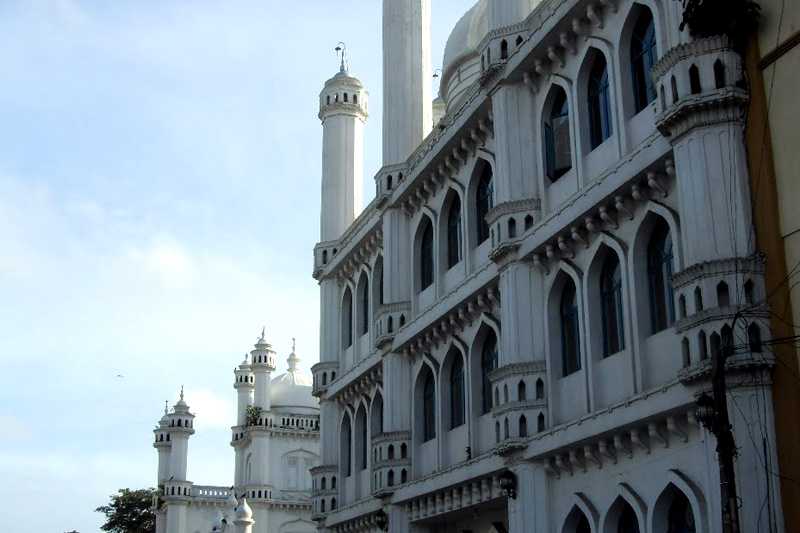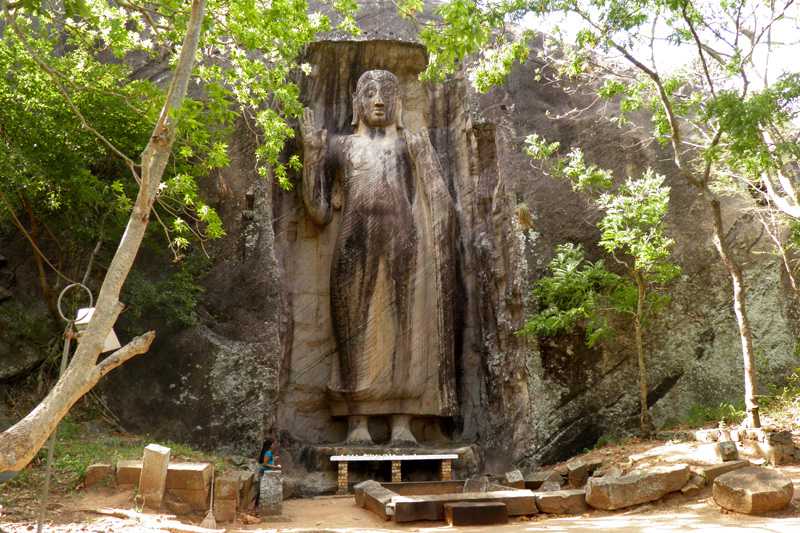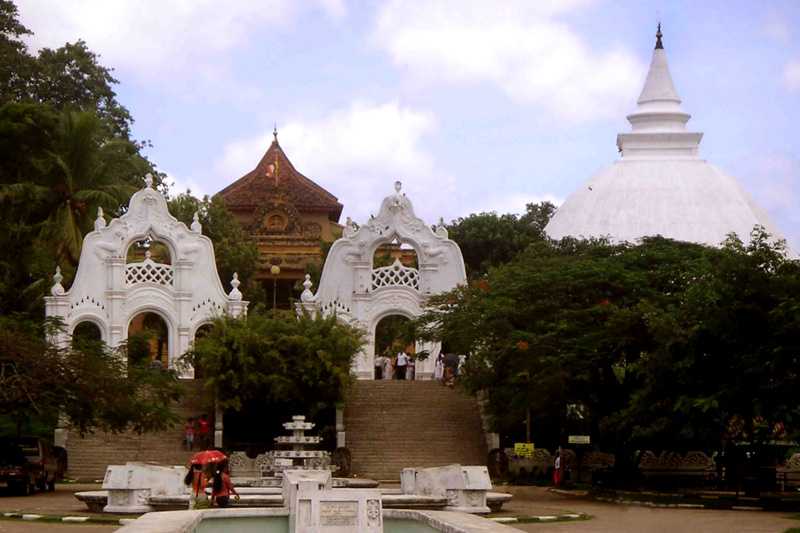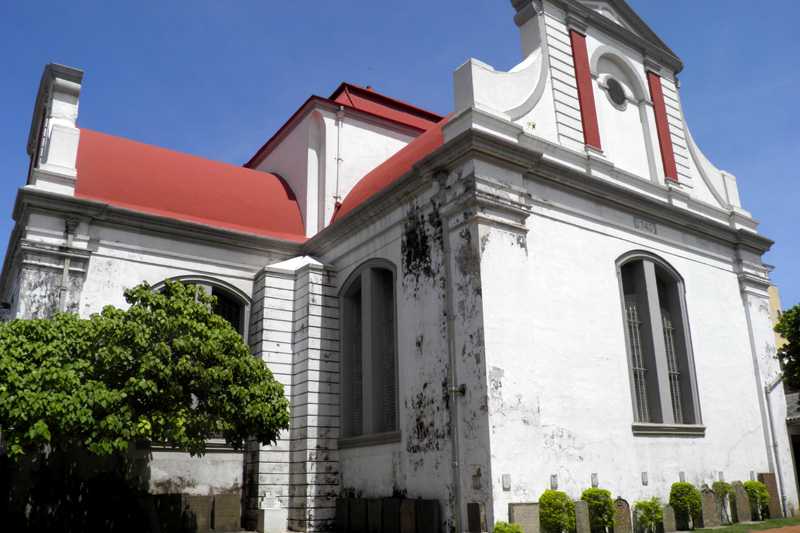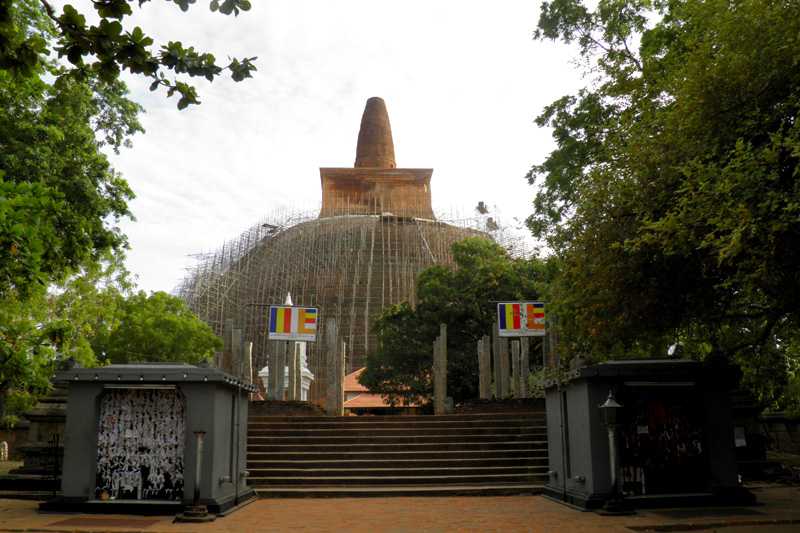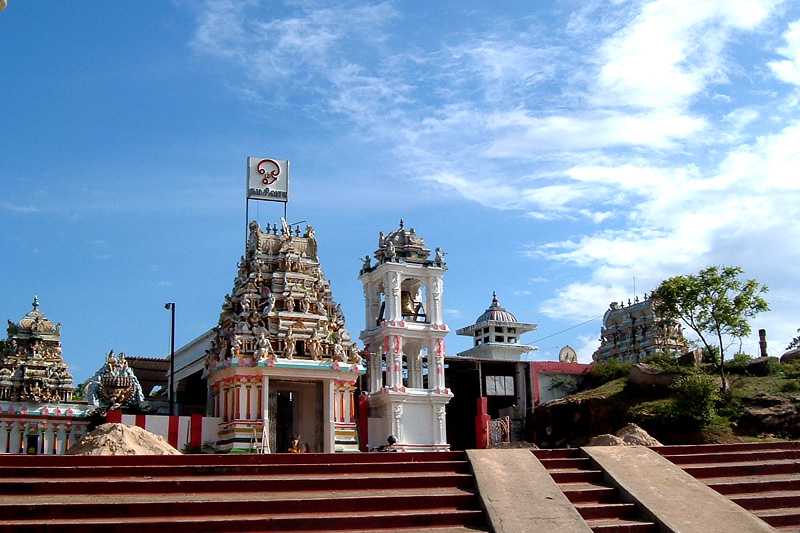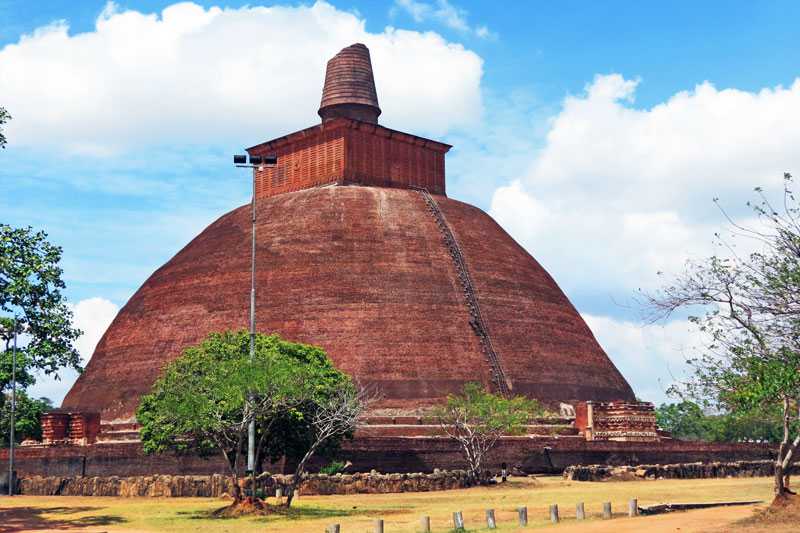Ridi Vihara
110 kms from Colombo, Ridi Vihara is located in Ridigama, a small village 20 kms northeast of Kurunegala town. This temple is believed to be built by King Dutugemunu in the 2nd century BCE, as a monument to the place where he found a silver (Ridi) ore mine which was used to finance the building of the gigantic Ruwanweli Seya. The Mahavamsa describes the discovery of this mine by a trader. In a southerly direction from the city, at a distance of eight yojanas (8 x 7km) silver appeared in the Ambatthakola-cave. A merchant from the city, taking many wagons with him, in order to bring ginger and so forth from Malaya, had set out for Malaya. Not far from the cave he brought the wagons to a halt and since he had a need of wood for whips he went up that mountain. As he saw here a branch of a bread-fruit-tree, bearing one single fruit as large as a water pitcher, and dragged down by the weight of the fruit, he cut the (fruit) which was lying on a stone away from the stalk with his knife, and thinking: `I will give the first (produce as alms),’ with faith he announced the (meal) time.
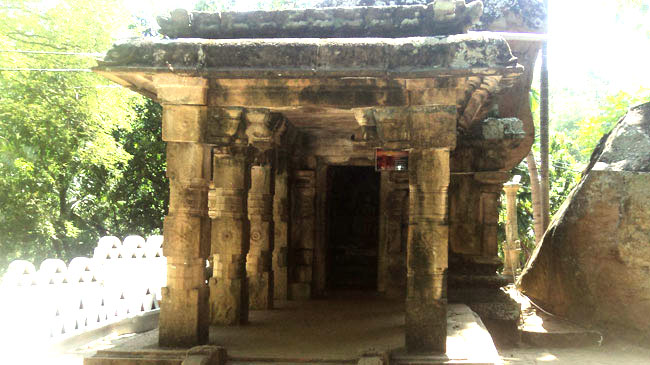
This area was part of the Kandyan Kingdom during European occupation and King Kirthi Sri Rajasingha has made major renovations on this temple. Therefore most of the paintings and statues we see today belong to the Kandyan Era. On the way to the main cave you will come across a curious image house built entirely of stone. This is called the ‘Waraka Welandu Viharaya’ which translates to ‘the temple where Jak Fruit was consumed’. It is said that that this was the cave which the Indragupta Maha Thero consumed the Jak-Fruit (called bread-fruit in Mahavamsa translation) which was offered by the Merchant. Inside this image house is a seated Buddha statue and all the walls have Buddhist paintings belonging to the Kandyan Era.
The design of this building strangely resembles a Devale (dedicated to Hindu Gods). There is also a hallway to enter the shrine similar to Devale Design. The 8-stone pillars holding the main roof of the hallway have carvings of female dancers which are not generally found in the Buddha image houses. Therefore it could be that this building was built during a period where the Hindu beliefs were strongly present in the country such as the Polonnaruwa Era or Kandyan Era.
Passing this image house you would enter an entrance hall of the main Vihara complex. Here you would see a massive arms bowl which is said to have been used for Buddha Puja in the ancient times.
The Maha Vihara is located inside a spacious rock cave and contains a 9 metre recumbent Buddha image and the original gold plated Buddha Image donated by King Dutugemunu. At the feet of recumbent Buddha image there is a statue of Ananda Thero, a statue of a Maître Bodhisattva and then statues of some Deities. It is believed that the last statue of Deity is actually a statue of King Dutugemunu. After these are a row of 5 Buddha statues which is said to have been originally gold plated.
The flower pedestal of the recumbent Buddha image also has a very curious feature. It is decorated with about two hundred 18th century Dutch tiles portraying the life of Christ popularly known as Bible tiles. These are believed to have been presented to King Kirthi Sri Rajasingha (1747 - 1781) by a Dutch Governor who in turn donated it to the temple. From the way these tiles are arranged, the Tiller seems to be clueless of the pictures on the tiles. The roof of the cave is plastered and painted with various patterns.
Entrance to the Uda Vihara is through a side door in the Maha Vihara. Here you will pass a protected door frame decorated with ivory carvings. Door frames decorated with ivory are an extremely rare feature for ancient buildings. This door has been subject to vandalism and the lower parts of the ivory are now missing. At the top centre of the decorations is what looks like a vase but closer inspection reveals it a carving of 5 females interwoven together. This design is called “Pancha Naari Getaya” (figure of five women entwined in the shape of a pot). Besides this is a carving of 2 lions. Around these are fragments of the ivory designs which covered the rest of the frame.
The Uda Vihara believed to be built by King Kirthi Sri Rajasingha consists of three chambers and a connecting corridor. The first chamber is dedicated to deity who protects the mountain of Ridi Vihara. He is called “Kumara Bandara Deviyo”. The second which is the largest is the Buddha Image house. In addition to the large seated Buddha image this hall contains some curious and unique drawings. These drawings are not on walls but on the sides of the pedestal of the seated Buddha. On the left side is a picture of 3 lions who share one head. This is called “Tri Singha” drawing. On the other side of the seat is another unique drawing called “Vrushaba Kunjaraya” which the entwined heads of the bull and the elephant. On the same pedestal you can see 3 pictures of soldiers with arms. These are believed to be a depiction of Rama and Rawana war.
At the end of the cave, outside the shrine room, there is a painting of “Navanari Kunjaraya”, the figures of nine women arranged in such a way to create the image of an elephant. Inside the temple are stupas. One beside a cave behind the Uda Maluwa and the other is on an altogether separate hill called “Sarasum Gala”.







